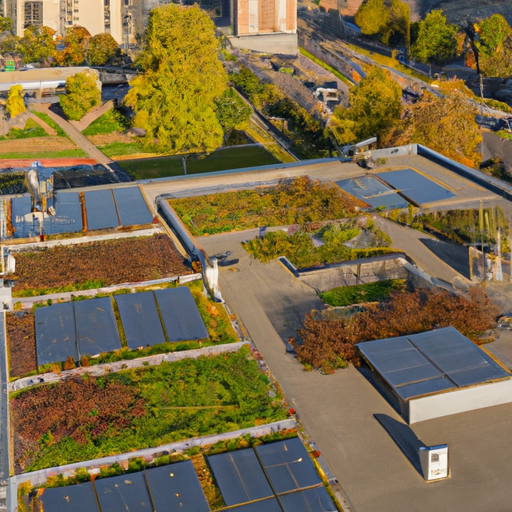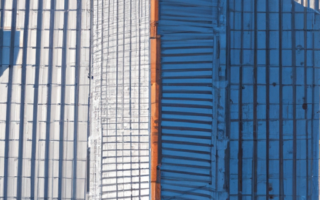Introduction to Innovative Roof Construction Techniques: Exploring Modern Solutions for Today’s Builders
Introduction to Innovative Roof Construction Techniques: Exploring Modern Solutions for Today’s Builders
Roof construction techniques have come a long way in recent years, with the development of innovative solutions that cater to the needs and demands of today’s builders. As new materials and technologies emerge, builders are now able to create roofs that are not only aesthetically pleasing but also highly functional and sustainable.
One of the key factors driving the advancement of roof construction techniques is the increasing focus on energy efficiency and environmental sustainability. Builders are now more than ever concerned about reducing the carbon footprint of their construction projects and finding ways to make buildings more energy-efficient. Traditional roofing materials, such as asphalt shingles, are being replaced with more eco-friendly options, such as solar panels and green roofs.
Solar roofing is one of the most exciting and innovative solutions that has gained popularity in recent years. Integrating solar panels into the roof allows for the generation of clean and renewable energy while preserving the overall aesthetics of the building. These solar panels can be seamlessly integrated into various roofing materials, such as metal, slate, or even asphalt shingles, making them an excellent choice for both new constructions and retrofitting existing roofs.
Green roofs, also known as living roofs, are another innovative technique that is being increasingly adopted by builders. These roofs are covered with a layer of vegetation, which helps reduce stormwater runoff, provides insulation, and improves air quality. Additionally, green roofs act as natural heat insulators, keeping the building cool during summer months and reducing the need for air conditioning.
Advancements in roofing materials have also played a significant role in revolutionizing roof construction techniques. Lightweight and durable materials, such as engineered trusses and prefabricated roof panels, have made the construction process faster and more efficient. These materials not only reduce the overall weight of the roof but also provide better structural integrity, ensuring the longevity of the building.
Furthermore, the use of advanced roofing membranes and coatings has greatly improved the waterproofing capabilities of roofs, protecting buildings from water damage and leaks. These advanced membranes act as a barrier against moisture, preventing it from seeping into the building and causing structural issues. Additionally, reflective coatings can be applied to the roof surface to reduce heat absorption and minimize energy consumption for cooling purposes.
In conclusion, innovative roof construction techniques have opened up new possibilities for builders, allowing them to create functional, sustainable, and visually appealing roofs. With the advancement of materials, technologies, and a growing focus on energy efficiency and environmental sustainability, the future of roof construction looks promising. By embracing these modern solutions, builders can not only meet the current demands of the construction industry but also contribute to a greener and more sustainable future.
Embracing Green Roofing: Sustainable and Eco-Friendly Roof Construction Methods
As the construction industry continues to evolve and embrace sustainable practices, innovative roof construction techniques have become a focal point for today’s builders. One area that has gained significant attention is green roofing, which offers sustainable and eco-friendly solutions for roof construction.
Green roofing, also known as living roofing or eco-roofing, involves the use of plants and vegetation on the roof surface. This innovative approach brings numerous benefits to both the environment and the building itself.
First and foremost, green roofing helps to mitigate the urban heat island effect, a phenomenon where cities experience higher temperatures due to the abundance of concrete and asphalt surfaces. By incorporating vegetation on the roof, green roofs can significantly reduce heat absorption and lower the ambient temperature. This, in turn, reduces the need for air conditioning, resulting in energy savings and lower carbon emissions.
Furthermore, green roofing provides natural insulation to buildings, thereby increasing their energy efficiency. The layers of vegetation and soil act as thermal barriers, preventing heat loss in colder months and keeping the interior cool during warmer periods. This natural insulation helps to reduce reliance on heating and cooling systems, ultimately reducing energy consumption and utility costs.
In addition to their energy-saving benefits, green roofs also improve air quality by absorbing pollutants and filtering rainwater. The plants on the roof capture airborne contaminants, reducing their presence in the surrounding environment. The vegetation also acts as a natural filtration system, removing pollutants from rainwater and preventing them from entering waterways.
Moreover, green roofs contribute to biodiversity by providing habitats for birds, insects, and other wildlife. By creating green spaces in urban areas, these roofs support ecosystems that are often displaced due to urbanization. This biodiversity not only enhances the aesthetic appeal of buildings but also promotes a healthier and more balanced environment.
With the increasing popularity and proven benefits of green roofing, builders are incorporating these techniques into their construction projects. There are various methods available for implementing green roofs, including extensive and intensive systems. Extensive green roofs are lightweight and require minimal maintenance, making them suitable for retrofitting existing buildings. On the other hand, intensive green roofs are more elaborate and can support a wider range of vegetation, but require greater structural support.
In conclusion, embracing green roofing techniques is a sustainable and eco-friendly approach to roof construction. The numerous benefits, including energy efficiency, improved air quality, and biodiversity, make green roofs a desirable choice for builders seeking innovative solutions. By incorporating green roofing into their projects, builders can contribute to a greener and more sustainable future.
Advancements in Lightweight Roofing Systems: Enhancing Efficiency and Durability
Advancements in lightweight roofing systems have revolutionized the way roofs are constructed in modern times. With the demand for energy-efficient and durable buildings on the rise, builders are increasingly turning to innovative techniques to enhance the efficiency and durability of roofs.
One of the key developments in lightweight roofing systems is the use of advanced materials such as engineered composites and polymers. These materials offer a combination of strength and lightness, making them ideal for roofing applications. Additionally, they are highly resistant to weathering, UV radiation, and chemical exposure, ensuring the longevity of the roof.
Another notable advancement is the introduction of prefabricated roofing systems. These systems are manufactured off-site in controlled environments, allowing for precise construction and faster installation times. The prefabricated elements can be tailored to fit any architectural design, offering greater flexibility to builders.
The incorporation of innovative insulation materials has also significantly contributed to the efficiency of lightweight roofing systems. With options such as rigid foam insulation boards and reflective insulation, builders can effectively reduce heat transfer and maintain a comfortable indoor environment. This not only lowers energy consumption but also enhances the overall sustainability of the building.
In addition to these advancements, the integration of smart technologies in roofing systems has further improved their performance. Sensors can be installed to monitor weather conditions, roof leaks, and structural integrity, providing real-time data for timely maintenance and repairs. This proactive approach helps prevent costly damages and ensures the longevity of the roof.
Overall, the advancements in lightweight roofing systems have revolutionized the construction industry by offering efficient and durable solutions for today’s builders. With continuous research and development, these systems are expected to further evolve, contributing to the creation of sustainable and energy-efficient buildings.
The Future of Smart Roofs: Incorporating Technology for Energy Efficiency and Automation
The future of smart roofs in building construction is becoming increasingly prominent, as technology continues to advance and play a significant role in our everyday lives. Incorporating technology into roof construction not only enhances the aesthetic appeal of buildings but also improves energy efficiency and automation processes. In this article, we’ll explore some of the innovative roof construction techniques that are shaping the future of smart roofs.
One of the key aspects of smart roofs is the integration of solar panels and photovoltaic systems. Solar energy is a sustainable and renewable energy source that can be harnessed to power buildings. By incorporating solar panels into the roof design, builders can create an energy-efficient system that reduces reliance on conventional energy sources. Additionally, advanced monitoring and automation systems can be installed to optimize energy usage by automatically adjusting solar panel angles and tracking sunlight for maximum efficiency.
Another exciting development in smart roofs is the use of active roof systems. These systems go beyond traditional insulation and ventilation methods and actively optimize the indoor environment. Active roof systems can include elements such as moisture and temperature sensors, which enable automated control of ventilation and insulation to maintain optimal living conditions. For example, during hot summers, the roof can automatically open vents to release excess heat and lower energy consumption for cooling.
The integration of Internet of Things (IoT) technology has also revolutionized smart roof construction. IoT devices can be connected to various systems within the building, allowing for remote monitoring and control. With IoT-enabled smart roofs, building owners and facility managers can access real-time data on energy consumption, temperature patterns, and even roof maintenance requirements. This data-driven approach enables proactive decision-making, reduces costs, and enhances overall efficiency.
Furthermore, the advent of decentralized energy systems, such as microgrids, has impacted smart roof construction. Microgrids allow buildings to generate and store their energy, reducing reliance on the main power grid. By incorporating energy storage systems into roofs, excess energy generated from solar panels can be stored and used during times of high energy demand or when the grid is down. This not only improves the building’s energy independence but also enhances resilience and reduces the environmental impact.
In conclusion, the future of smart roofs in building construction is bright and promising. Incorporating technology into roof construction not only provides energy efficiency and automation but also offers sustainable solutions for a greener and smarter future. From solar panels and active roof systems to IoT integration and decentralized energy systems, the possibilities for innovative roof construction techniques are endless. Builders and architects must embrace these technologies to create buildings that are not only visually appealing but also environmentally conscious and technologically advanced.



